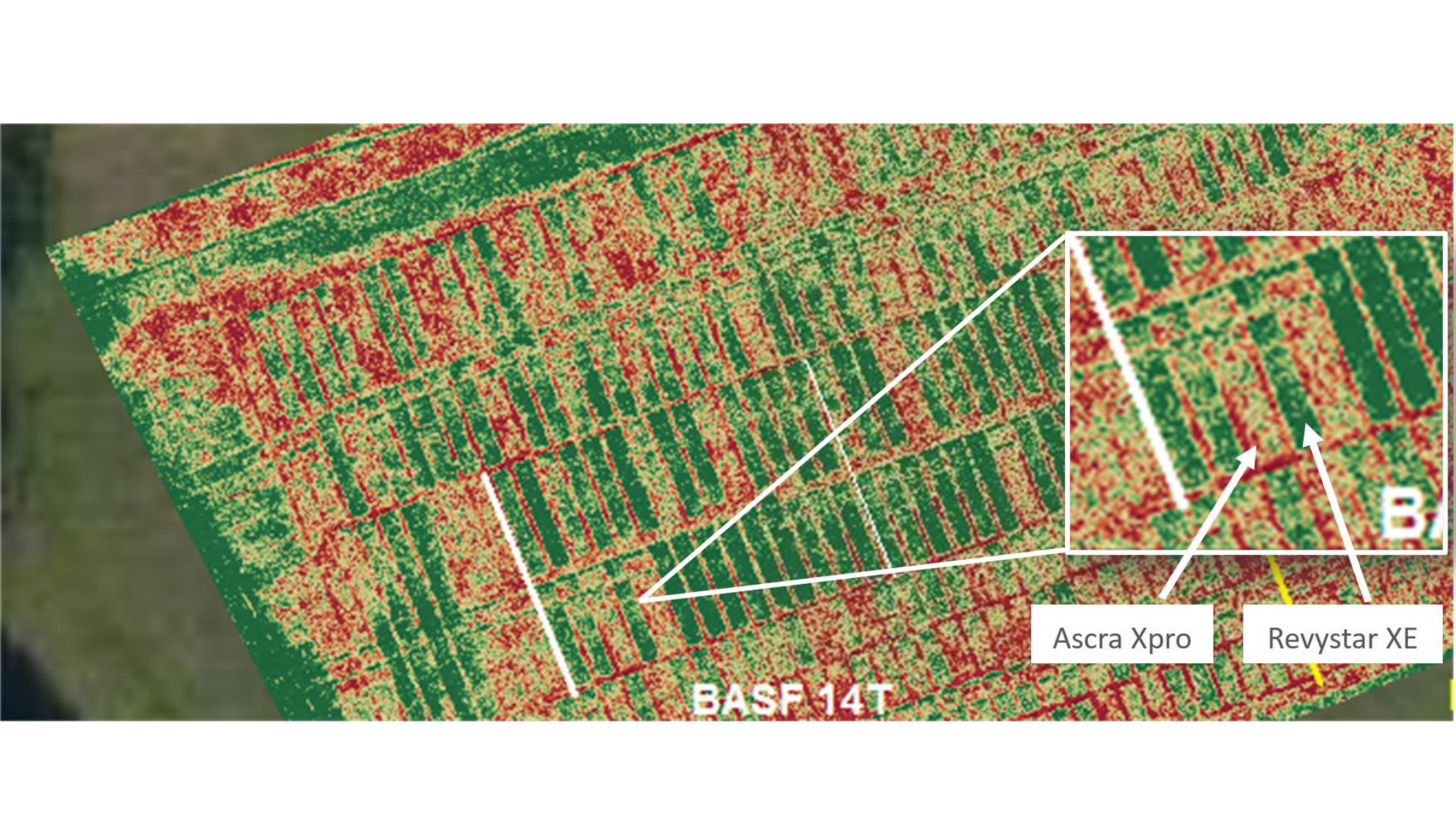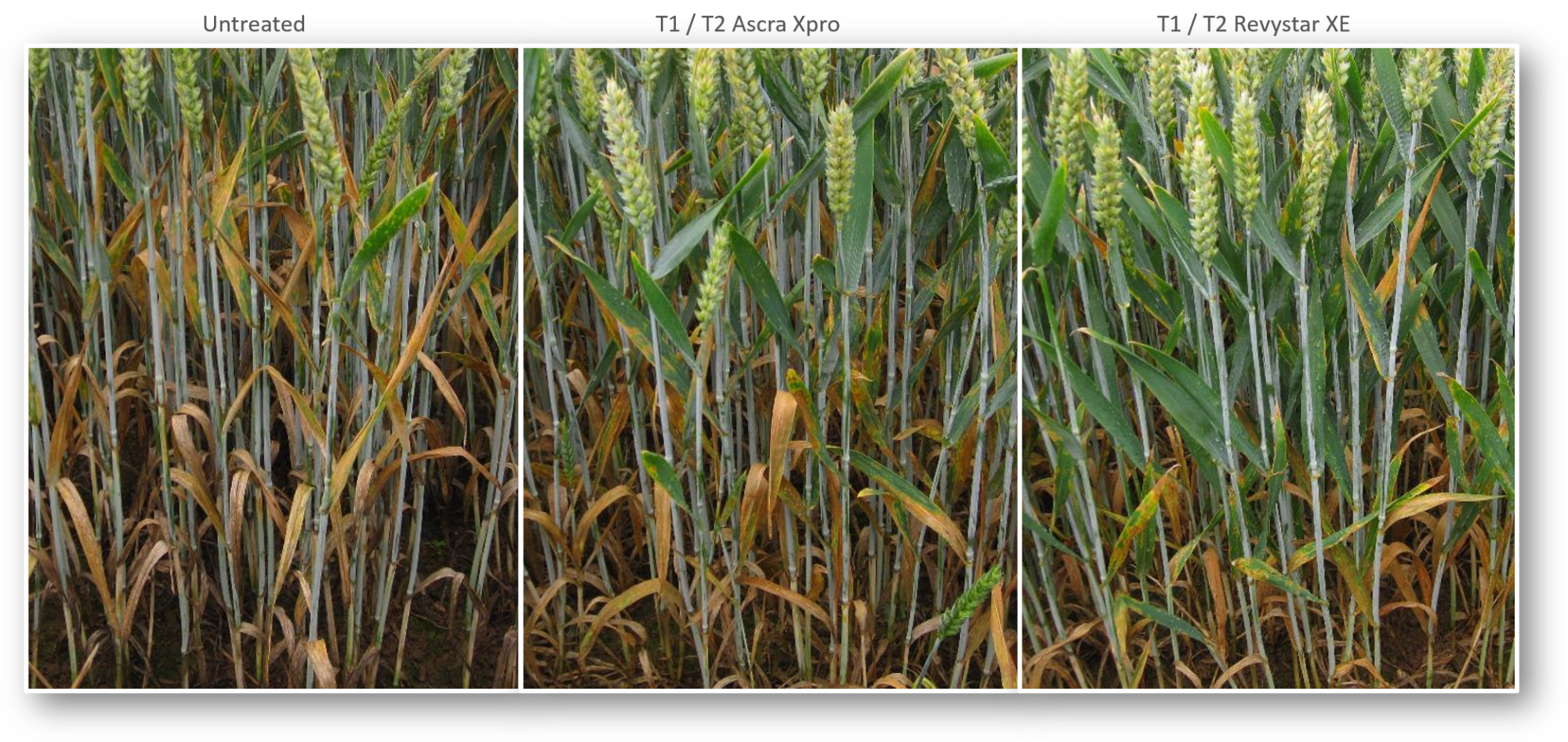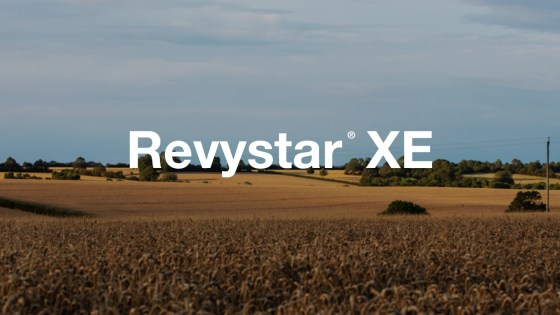Implementing 2020 learnings in 2021
16.02.2021
Rebecca Joynt, Plant Pathologist - ADAS
Dr Jon Helliwell, Business Development Manager - BASF
There was relatively low septoria pressure in 2020 at the time of T2 applications as much of the country had been unusually dry through April and May.
However, ADAS trials in a September sown crop of Elation in Pembrokeshire received above average rainfall in June which created a late onset of septoria and a high pressure situation into July.


Rebecca Joynt, Plant Pathologist, ADAS said, “When we studied drone imagery of the crop 52 days after the T2 application we found areas which had been treated at T1 and T2 with Revystar® XE were noticeably greener than those areas which had two applications of Ascra® Xpro, demonstrating the longevity of control from T2 Revystar® XE applications in late May to the peak of the epidemic in July.”
In ADAS trials across the country we consistently saw Revystar® XE give effective control of septoria resulting in positive yield responses.”

Septoria remains the key disease of focus, however, there must be caution with regards to yellow rust.

Dr Jon Helliwell, Business Development Manager, BASF said, “In 2020 we saw regardless of disease pressure Revystar® XE performed very well. It was very consistent across the whole trial network, showing its flexibility in different scenarios. There is strong independent data to support Revystar® XE applications in both septoria and yellow rust scenarios.
We saw the benefit of using Revystar® XE over commercial standards in 2020, despite it being an unusually low septoria year at application timing. By utilising Xemium® and Revysol®, the active ingredients in Revystar® XE , in combination you are bringing far more than just disease control. We are not just protecting crop potential - we are also building yield, in the absence of noticeable disease in certain scenarios.
AHDB data showed, in a perceived high yellow rust year, in 2020, Revystar® XE performing on par with market standards. However, across all products at full label dose we are still leaving a significant amount of disease, and there is now no product on the market as a standalone treatment which can control yellow rust.
T0 and T1 timings will be increasingly important to get on top of yellow rust infection early, particularly in high risk scenarios. Not allowing the disease to get established is the new normal.”
In our previous blog, we look at our number one enemy when it comes to wheat crops – Septoria. Click here to read.
Revystar® XE and Revysol® are registered trademarks of BASF. All other brand names used on this article are Trademarks of other manufacturers in which proprietary rights may exist. Revystar® XE contains Revysol® and Xemium®. Revysol® contains mefentrifluconazole. Xemium® contains fluxapyroxad. Ascra® XPro contains bixafen, fluopyram and prothioconazole. Always read the label and product information before use. For further product information including warning phrases and symbols, you can refer to agricentre.basf.co.uk © BASF 2021 | All rights reserved.

